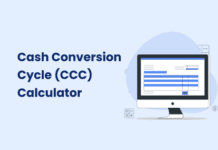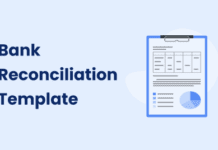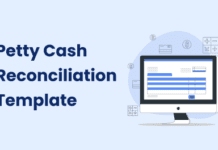If you are part of the finance team, you know the frustration of late nights spent chasing overdue payments, manually processing approvals, and double-checking endless spreadsheets. These time-consuming tasks pile up, taking your focus away from more strategic, value-driving activities. But in 2024, clinging to outdated processes is just holding your business back.
Finance automation tools are the answer. They are a practical solution designed to reduce manual work, eliminate errors, and give you the real-time data you need to make informed decisions.
In this guide, we will break down the most effective finance automation tools for 2024. Whether you are running a small business or leading the finance team of a fast-growing company, this is how you can streamline operations and focus on growth.
Understanding Finance Automation Tools
Let us start with the basics. What exactly are finance automation tools, and why should you care?
In simple terms, finance automation tools handle repetitive financial tasks automatically. These tools are excellent for streamlining how your team operates, helping you move away from manual work and outdated systems. Here is a closer look at the core technologies driving this shift:
- Robotic Process Automation (RPA): This tech automates repetitive tasks such as data entry or invoice processing. Think of it as a digital workforce that never makes mistakes.
- Artificial Intelligence (AI) and Machine Learning: AI can handle more complex tasks, from analyzing data trends to predicting payment delays, and it can learn and improve over time.
- Integration with Existing Systems: The best finance automation tools do not disrupt your current setup. They plug right into your ERP, accounting software, or other systems, giving you a comprehensive view of your financial operations.
It is about maintaining a balance between speed, accuracy, and efficiency, enabling your team to focus on high-value work rather than spending their time on routine tasks. With finance automation, you are giving your business the foundation it needs to operate more effectively.
Key Benefits of Finance Automation Tools
Implementing finance automation tools reshapes how your team handles everyday tasks, cuts down on manual work, and increases accuracy. Here are the key benefits that make these tools essential:
1. Time Savings: Reducing Repetitive Tasks
You are probably familiar with how much time gets wasted on tasks such as data entry and invoice matching. With automation, you can say goodbye to those hours spent on menial tasks. The tools take over, leaving you with more time to focus on analysis, forecasting, or any high-priority projects.
2. Error Reduction: Lowering Manual Mistakes
Every manual entry is a chance for an error. One wrong number could lead to hours of backtracking or worse—incorrect financial reports. By automating processes such as accounts payable and receivable, you minimize the chances of human error. This means cleaner books and fewer headaches.
3. Enhanced Compliance: Staying Up to Date
Regulations change constantly, and keeping up with compliance can be overwhelming. Finance automation tools ensure that your processes are always in line with the latest rules. Whether it is automated audit trails or real-time data updates, you reduce the risk of falling behind on regulatory requirements.
4. Insightful Decision-Making: Real-Time Data at Your Fingertips
Manual processes slow down your access to information. With finance automation, you get real-time data and analytics. This enables quicker and more informed decision-making, which can have a direct impact on business growth.
Choosing the Right Finance Automation Tool
Picking the right finance automation tool is not a one-size-fits-all situation. What works for a small business might not fit the needs of a large enterprise. You need to focus on a few key areas to make the best decision for your team.
1. Cloud-Based Accessibility: Work From Anywhere
A cloud-based solution means your team can securely access data from anywhere. With real-time updates, everyone stays on the same page, whether they are in the office or working from home.
2. User-Friendly Interface
You do not want to spend hours training your team on how to use new software. Look for tools that are intuitive and easy to pick up. A user-friendly interface ensures that even those without a tech background can jump right in and get things done. The tool should simplify your daily operations.
3. Cost-Effectiveness
You need to stay within your budget, but that does not mean you have to sacrifice key features. When comparing tools, think about how much value they bring to your business. Are you getting the features you need without paying for extras that you will never use? A good tool offers the right balance between functionality and price.
4. Customer-Centric Reporting
If you are sharing financial reports with external stakeholders or customers, the tool should produce professional, polished outputs. You want your reports to reflect well on your business. Look for tools that allow you to customize reports to fit your brand’s image and make communication seamless.
5. Robust Support
Problems will arise. When they do, you need to know that you have a support team ready to assist. Look for vendors that offer dedicated customer support—ideally, 24/7 availability. Reliable support means your team spends less time troubleshooting and more time on the work that matters.
Choosing the right tool sets the foundation for automating your finance processes. Now, Let us take a look at the top finance automation tools for 2024.
Top Finance Automation Tools for 2024
Now that you know what to look for in a finance automation tool, Let us review some of the best options available in 2024. Each tool offers something unique, and depending on your business size or specific needs, one of these may be the perfect fit for your team.
1. Peakflo
Peakflo stands out with its end-to-end automation for accounts receivable, procurement, and travel and expense reimbursement. It is built for businesses that want to streamline both sides of their cash flow and propel working capital.
- AR Automation: With Peakflo, you can automate recurring invoices and set up reminders based on customer payment behavior. Whether you need email, SMS, or WhatsApp reminders, Peakflo takes care of it. This helps reduce your DSO (days sales outstanding) and improves cash flow. It also streamlines cash application and payment posting to ERP to fast-track month-end close.
- AP Automation: Peakflo automates accounts payable by accurately capturing invoice data with AI-powered OCR, simplifying 3-way matching, streamlining approval workflows, and enabling quick disbursements. It reduces manual work and ensures accurate payments with real-time reporting and easy ERP integration.
- Vendor Management: Peakflo’s vendor onboarding allows you to onboard and verify vendor details and approvals easily. Its vendor portal allows your vendors to check purchase orders, issue invoices against POs or GNs, track payment status, and communicate with you easily. The auto-disbursement feature lets you pay vendors quickly without manual intervention. The AI-powered Vendor Reconciliation automatically captures, matches, and detects anomalies in vendor statements for accelerated month-end close time.
- Travel & Expense (T&E) Reimbursement: Peakflo streamlines travel requests, expense reports, and reimbursements. Employees can easily submit expenses and get reimbursed quickly. Companies can define fuel rates and mileage reimbursements, while dynamic per diem limits give control and visibility over daily budgets.
- Split Payments: Peakflo’s rules-based payout engine allows businesses to split funds between multiple recipients. Companies can define transaction split percentages, and the automated mass payout process eliminates manual work, ensuring accuracy and efficiency.
- Real-Time Insights: You also get real-time tracking of your invoices and payments, which means no more chasing updates. Everything you need, from invoice statuses to vendor payout schedules, is at your fingertips. It also offers customizable reports to suit your business needs.
- Budget Management: Peakflo helps track budgets, ensuring that expenses align with allocated budgets. This feature automatically assigns bills to budgets, reducing the need for manual adjustments.
- End-to-End Payment Automation: Peakflo automates the entire payment flow, from revenue collection to vendor payouts, including payment reminders, reconciliation, approvals, and disbursements. With multi-currency support, it simplifies international transactions, ensuring compliance and accuracy when dealing with different currencies.
Peakflo integrates seamlessly with accounting software and ERPs, ensuring data consistency across platforms. Additionally, API and SFTP integrations enable easy connection to existing systems.
Peakflo is especially useful for globally operating organizations with large transactional volumes looking to save time and reduce manual work while focusing on agility & efficiency.
2. BlackLine
BlackLine focuses on simplifying your financial close and reconciliation processes. It is ideal for businesses that need to keep their accounts balanced and their books in check.
- Financial Close Automation: BlackLine automates the month-end close by handling account reconciliations and journal entries. It tracks every step of the close process, so your team always knows what is complete and what needs attention.
- Automated Accounts Receivable: It also streamlines receivables management, helping you track unpaid invoices and send reminders automatically. This reduces manual follow-ups and helps ensure that nothing falls through the cracks.
BlackLine works best for companies dealing with complex reconciliations or those that need extra help managing their financial close.
3. Xero
If you are a small business looking for something simple yet effective, Xero is your go-to solution. It offers a clean interface and easy-to-use tools that do not require much setup.
- User-Friendly for Small Businesses: Xero simplifies everyday accounting tasks such as bank reconciliation, invoicing, and payroll. It integrates with your bank accounts to pull in transactions automatically, making it easy to match them up and keep your books accurate.
- Cloud-Based: Xero is cloud-based, so you can access it from anywhere. You can send invoices, pay vendors, or run reports whether you are in the office or on the go.
For small teams or businesses new to finance automation, Xero is a solid choice.
4. QuickBooks
QuickBooks is a household name for small to mid-sized businesses. It offers all the core features you would expect from an accounting platform, with the added benefit of easy tax management.
- Simplified Accounting and Tax Management: QuickBooks helps you handle everything from payroll to taxes. It tracks your income and expenses and generates the reports you need come tax season.
- Integrates with Other Tools: It also seamlessly integrates with other business apps, such as CRMs or e-commerce platforms, ensuring that all financial data is centralized.
For those looking for an all-in-one tool that is simple to use, QuickBooks is a reliable option.
Each tool has its strengths, and choosing one depends on the specific challenges your finance team faces.
Now, Let us move on to how these tools can help automate key financial processes.
Automating Key Financial Processes
Automation can simplify even the most complex processes, helping you manage everything from accounts receivable to payroll with greater accuracy.
Here are some fundamental processes that finance automation tools can transform:
1. Accounts Receivable
Managing accounts receivable is often a balancing act. You need to ensure customers pay on time without constantly chasing them down. Automation tools can take care of this for you.
- Recurring Invoices: Automatically send invoices on a regular schedule, ensuring customers receive them without any manual effort from your team.
- Overdue Payment Reminders: Automate reminders based on customer payment behavior. Set rules for when to send follow-ups and let the system do the heavy lifting. You will spend less time chasing late payments and more time focusing on high-priority tasks.
- Cash Application: Automation simplifies the cash application process by matching payments to open invoices, ensuring faster and more accurate reconciliation. The system captures and posts payments directly to your ERP or accounting software, eliminating manual data entry errors and speeding up the month-end close.
2. Procure-to-Pay
Accounts payable automation eliminates the need to enter invoice data or chase approvals manually.
- Invoice Capture
- Use AI-powered tools to scan invoices and automatically extract the necessary details—no more typing in vendor data or amounts.
- Approval Workflows
- Set up rules for approving payments. The system can route invoices to the right person and ensure everything is paid on time without bottlenecks.
- Automating accounts payable helps you avoid late fees and missed payments while keeping vendors happy.
- Purchase Order Solutions
Tracking purchase orders manually can lead to misplaced information or missed spending limits. Automating this process lets you keep everything in check.
- Procurement Tracking: Automation tools capture purchase orders, track approvals, and reconcile spending against budgets. No more spreadsheets—everything is handled digitally.
- Spend Monitoring: Set spending limits and automatically approve or flag purchases based on pre-set rules.
This process keeps your procurement organized, reducing the risk of overspending or missed orders.
3. Payroll
Payroll management involves manually entering employee data, updating wages, and calculating taxes, which can be time-consuming and error-prone. Payroll automation tools take these tasks off your plate.
- Employee Banking Data: Store banking information for each employee so paychecks can be processed and transferred automatically.
- Wage Rates: Easily set up different wage rates for employees and let the system calculate pay based on hours worked or other factors.
Payroll becomes faster and more accurate with automation, which means fewer headaches for your team.
4. Travel and Expense Management
Managing employee travel and expense reports manually can be overwhelming. Automation simplifies the process by providing real-time visibility into travel costs and expenses.
- Expense Reports: Employees can submit their expenses digitally, and the system automatically processes and reimburses them.
- Travel Request Approval: Set up automated workflows to approve travel requests based on company policies, ensuring that budgets and travel guidelines are followed.
- Mileage and Per Diem: Automate mileage reimbursements and per diem limits, giving you more control over travel budgets while reducing manual data entry errors.
5. Reporting and Analysis
Manual reporting often involves pulling data from multiple sources, formatting it, and running calculations. Automation tools take over this tedious task.
- Automated Reports: Schedule regular reports to be generated and delivered directly to your inbox. Customize these to include everything you need, from departmental performance to cash flow.
- Real-Time Dashboards: Access live data from a centralized dashboard so you can make informed decisions without waiting for manual updates.
With automated reporting, you can focus on analyzing data, not compiling it.
6. Tax Solutions
Preparing for tax season often means gathering a mountain of paperwork. Automation can make this process seamless.
- Data Extraction: Use automation to capture information from receipts, bills, and invoices. This keeps all your tax documents in one place, organized, and ready when you need them.
- Compliance Checks: Automated tools can alert you to any missing or incorrect data that might cause issues during tax filing.
With automation, each of these processes becomes smoother and faster, allowing you to shift focus from routine tasks to more meaningful work.
Trends in Finance Automation
Automation is always incomplete. It evolves, and smart finance teams stay ahead by keeping an eye on where the technology is headed. By paying attention to these trends, you can ensure your business remains agile and ready for the future.
Here are some key trends shaping finance automation in 2024:
1. Generative AI
Generative AI is transforming finance—and many other industries—by creating new possibilities.
- Automated Report Generation: Generative AI can draft detailed financial reports, saving time and ensuring accuracy. With AI tools, teams can automatically generate reports based on real-time data, eliminating the need for manual effort.
- Scenario Analysis: This AI can simulate different financial scenarios, providing you with insights into the potential outcomes of various strategies and decisions.
- Communication Overhaul: AI can act as a real-time account manager, automating tasks like sending reminders, generating follow-up emails, and analyzing customer responses. This enables finance teams to focus on strategic tasks rather than repetitive ones, improving communication and efficiency.
- AI Assistance for Writing and Summarizing: Peakflo’s AI Assistance serves as both your personal writing partner and summarizer. Whether you need help crafting professional emails, translating messages into different languages, or summarizing key customer insights from account timelines, AI has you covered. It streamlines communication and decision-making by ensuring your messages are clear and professional while providing concise summaries of important information, saving you time and effort.
2. Hyperautomation
Hyperautomation takes automation a step further by combining advanced technologies such as artificial intelligence (AI), machine learning (ML), and robotic process automation (RPA) to streamline even the most complex processes.
- End-to-End Process Automation: Hyper Automation allows finance teams to automate everything from invoice processing to financial reporting. By integrating multiple technologies, hyperautomation can handle tasks that were previously too complex for standard automation.
- Smart Decision-Making: As stated earlier, hyperautomation leverages AI and ML to enhance decision-making, identifying patterns in large data sets, predicting financial trends, and optimizing workflows without human intervention.
- Increased Efficiency: With hyperautomation, finance teams can drastically reduce manual tasks, improving productivity and accuracy while freeing up time for higher-value strategic activities.
By embracing this, businesses can scale their automation efforts and achieve unparalleled efficiency in finance operations.
3. Blockchain
Blockchain is gaining traction for its ability to offer secure, transparent record-keeping. In finance, blockchain can streamline processes such as cross-border payments and contract management.
- Secure Transactions: Blockchain enables transactions that are safe from tampering. This means every transaction is permanently recorded, reducing the risk of errors or fraud.
- Smart Contracts: Blockchain allows businesses to set up self-executing contracts. These contracts are triggered when specific conditions are met, removing the need for manual oversight.
Blockchain might still be new to some, but it is worth paying attention to. It has the potential to drastically improve the management of financial records.
4. Interoperability
As finance systems become increasingly complex, interoperability—the ability of different systems and software to seamlessly communicate and exchange data—has become crucial.
- Seamless Integration: Interoperability allows various financial tools, platforms, and software to work together, improving efficiency and reducing the chances of data silos. It enables smooth communication between your accounting systems, payroll software, and customer relationship management (CRM) tools.
- Real-Time Data Exchange: With interoperable systems, your finance team can access and analyze real-time data from various sources, enabling quicker decision-making and enhanced collaboration across departments.
- Improved Compliance and Reporting: Interoperability ensures that your financial systems are aligned with regulatory standards, making it easier to meet compliance requirements and streamline reporting.
The more you integrate Generative AI into your finance operations, the more streamlined your processes will become—helping you stay competitive and proactive in decision-making.
Staying on top of these trends will keep you ahead of the curve and help you make the most of your finance automation tools. Next, we will look at some of the common challenges businesses face when implementing finance automation and how to overcome them.
Overcoming Common Challenges in Finance Automation
Implementing finance automation can come with its fair share of challenges. Here are the most common ones and how to address them:
- Data Integration
Many businesses use multiple systems, making data integration difficult. To fix this, clean your data, standardize formats, and use API integrations. This ensures smooth data flow between systems.
- Change Management
Employees might resist automation due to fears of job loss or changes in workflow. To help them adjust, clearly communicate the benefits, provide thorough training, and introduce changes gradually. This way, your team won’t feel overwhelmed.
- Cybersecurity
With more data online, security becomes a concern. Protect your data with encryption, strict access controls, and regular audits. This keeps your systems safe from breaches.
- Scalability
As your business grows, your automation tools should grow too. Choose cloud-based or modular systems that can expand with your company’s needs. This avoids the need for future overhauls.
By addressing these challenges head-on, you can ensure a smooth transition to finance automation, setting your team up for long-term success. Up next, we will dive into a summary of the key takeaways and what the future holds for finance automation.
Conclusion
Finance automation is all about transforming how your finance team works. By automating key processes such as invoicing, payroll, and accounts payable, you reduce manual errors, improve compliance, and free up your team to focus on decision-making that drives growth. The tools available today provide real-time visibility into your financial operations, helping you make informed choices faster.
Peakflo stands out for its ability to streamline both accounts receivable and payable. With customizable workflows, AI-powered invoice capture, and automated payment reminders, it helps businesses get paid faster, ensures timely vendor payments, and accurate expense reimbursement.
Ready to see how Peakflo can streamline your financial operations? Book a demo and experience how it can save you time and money while improving your compliance and cash flow.









![Why AI Sales Calls Are Making Good Sales Reps Even Better [2025 Guide] ai sales calls](https://cdn-kmjmp.nitrocdn.com/YvtqmrsiHUxqerlSiZgbfzqqTARWTElr/assets/images/optimized/rev-a4aafe3/blog.peakflo.co/wp-content/uploads/2025/09/65168cf6-3001-4733-8cbc-12d5684cf449-218x150.webp)

































